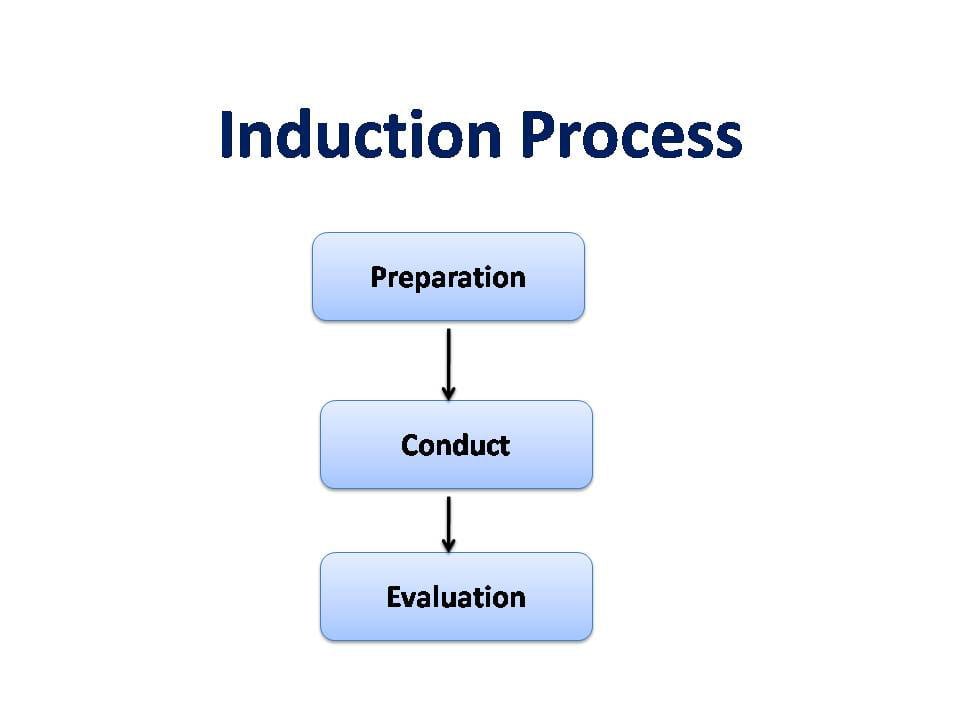The induction is an essential function in human resource management that systematically and formally welcomes fresh employees to the organization. This chapter briefly describes several terms about this function including, the meaning of induction, importance, objectives, types of induction, and the process of induction.
Learning outcomes
- Define induction function
- Explains the importance
- Objectives of induction
- Types of induction
- The process induction
Definition
Employee induction, also called employee orientation, refers to a well-structured formal process of welcoming new employees. Fresh employees do not have any idea about their workplace, rules, duties, and responsibilities. Therefore this function will help them to get a clear idea about their organization, job, workgroups, and any other facts related to the job.
Because of this HR function, fresh employees will be familiar with their duties and learn about the organization and prepare themselves to deal with it. So this HR function is a vital hr function for the new employees as well as the organization.
When considering this function, it can be divided into two categories. One is general induction and, another one is special induction.
The general induction is introducing newly recruited employees to the organizational settings. Moreover, the special induction means introducing newly recruited employees to the job and job environment.
Importance of induction
- Helps to build confidence about self
An induction program helps to build employee’s confidence, and eventually, new employees become productive employees.
- Reduces some costs
Most of the time, some employees resign from the organization during their first month. In this case, the orientation programs will help to reduce some costs such as the cost of extra supervision, cost of error correction, and cost of employees pay and benefits.
- To overcome nervousness
New employees can overcome their nervousness and shyness because of the orientation program.
- It helps to increase commitment.
A committed employee means an employee who recognizes organizational needs and prepares himself to work hard to accomplish them. An induction program plays a significant role in enhancing employee commitment.
- Maintain a good communication
The employees and management/employers can maintain good communication with the orientation program.
Objectives of induction
An organization aims to accomplish various objectives through this function.
- Provide essential information about the organization to new employees
- To develop employee confidence to become productive employees
- Provide a better understanding of the organization’s vision, mission, functions, and other organizational strategies.
- To provide facilities to the employees.
- To introduce new employees to their managers, team leaders, and subordinates.
- To maintain a good relationship with the existing employees.
Types of induction
There are four types of induction programs that can be seen in an organization. Furthermore, the programs include organizational induction, department induction, job induction, and human induction.
In the organization induction, the newly recruited employees are oriented to an organizational vision, mission goals, organizational strategies, and the organization’s current status.
When it comes to department induction, the new employees are oriented to the particular department (HR department, marketing department, finance department). Under this program, the employees learn about department process, duties, and responsibilities, in the department where he/she will have to perform.
When considering the job induction, a new employee is oriented to a specific job role. He/she will get a good understanding of his job, duties, tasks, and responsibilities that he/she will have to perform.
Human induction means new employees are introduced to all the personnel they will have to deal with regularly.
Induction process
there are three main stages in the induction process. The stages are preparation, conduct, and evaluation.

Preparation
As the first stage in this process, the organization needs to welcome its new employees. In this stage, an organization needed to find solutions for the following questions.
- Who should give the information?
New employees understand the nature of the organization, personnel policies, procedures, and rules from the orientation program. Therefore the organization should select a responsible person to present that information to the new employees. The person may be CEO, human resource manager, or a supervisor.
- How to give information
The organization can use various methods to deliver information to the new employees. Some delivery methods are employee handbooks, video films/CD/DVD, information booklets, documents, lectures, presentations, and discussions.
Most organizations use printing materials, an official website, training events, and employee handbooks to provide information.
- Within what time of period should the information be given?
The period of time giving the information depends on the nature of the organization, the type of the job role, and the time availability of the management.
- Where should the information be given
Usually, the information is given before the staff member arrives. The organization should let other staff members know the new employee will arrive. Therefore the staff members can arrange a time for introduction with the key people. Moreover, ensure about the essential work aids are available.
Conduct
As the second stage in this process, the organization briefly provides information to the employees. The person or persons provide a general introduction about the company, including the company’s name, vision, mission, functions, products, customers, top management, and company history. However, this initial briefing should not be provided in a printed word.
After completing the initial briefing, the new employees should be taken to their workplace and introduced to their manager/team leader.
Evaluation
The new employees should not be dropped by if any problems occur during the orientation period; hence, formal and systematic follow-up is necessary for the process. The manager/supervisor should frequently evaluate how well the new employee is doing his job.
The purpose of this evaluation stage is to make sure about the current orientation program reaching the need of new employees and the company’s needs. Furthermore, the evaluation helps to identify new ways to improve the current program.
Conclusion
- The induction function is essential in human resource management. It plays a vital role to be familiar with newly recruited employees.
- it can be defined as a systematic and formal process of welcoming new employees to the organization.
- New employees will get a better idea about the organization’s vision, mission, functions, processes, and other organizational strategies through this HR function.
- an organization accomplishes some objectives such as developing employee confidence, provide facilities, increase productivity, effective workforce through an orientation program.
- New employees will able to overcome their shyness and nervousness because of the orientation program.
- The induction process consists of three main stages. It includes preparation, conduct, and evaluation.
- An orientation program will help new employees to become productive employees. Moreover, it helps to achieve organizational goals and objectives optimally.





